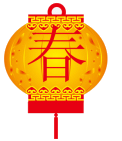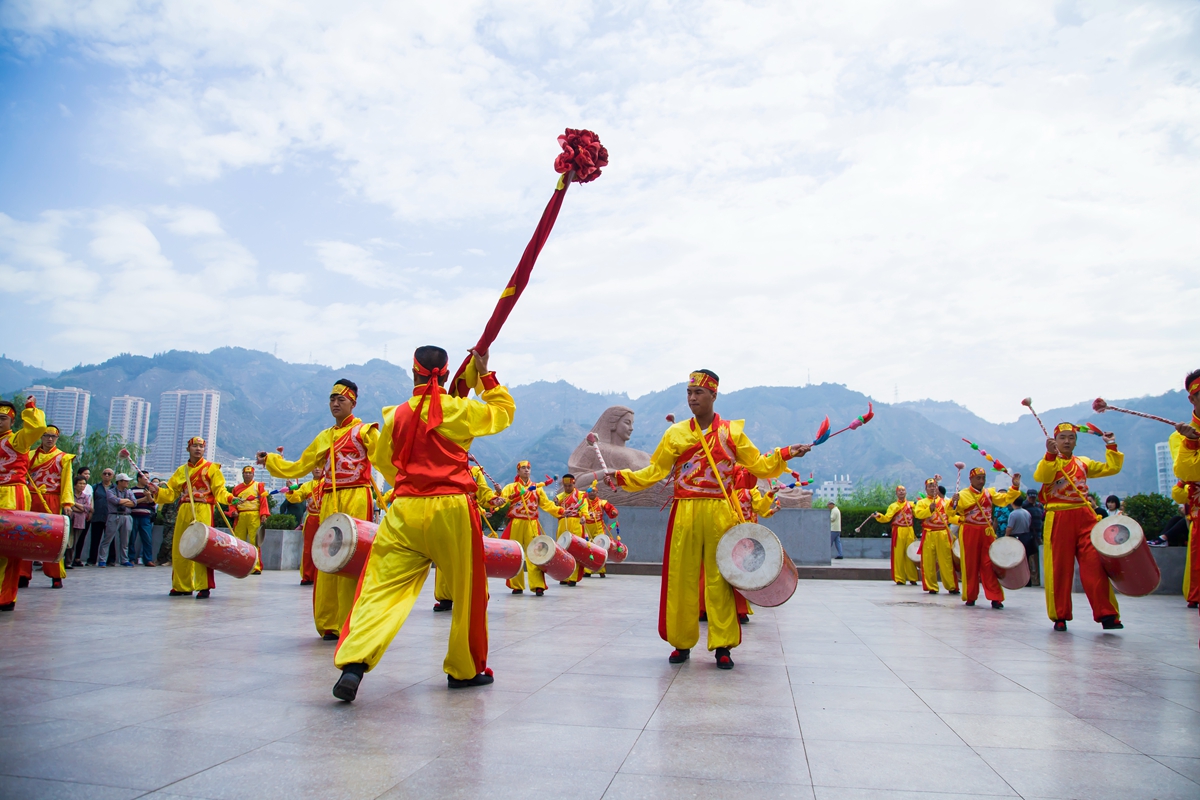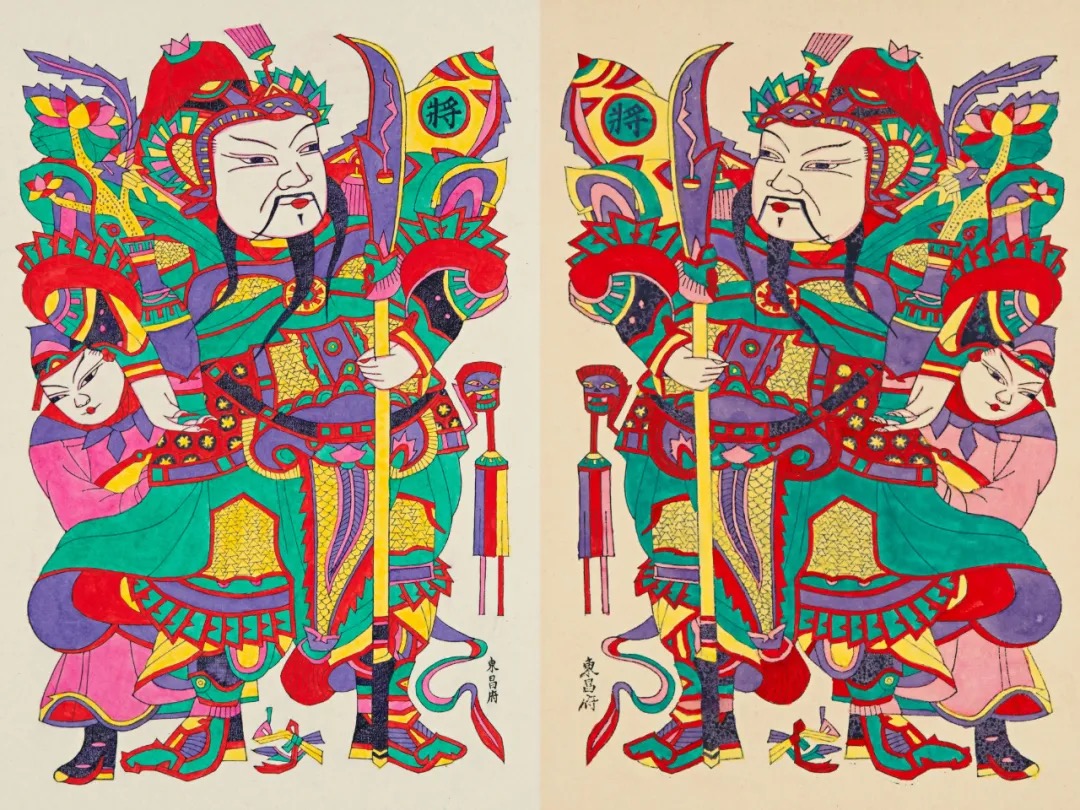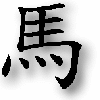
漢德百科全書 | 汉德百科全书
 Spring Festival
Spring Festival



腊肠的材料包括猪肉和肠衣[1]。先将猪肉剁碎,再按照所需的肥瘦肉比例加以混和,并加入盐、糖和酱油等调味料,然后把肉泥灌入肠衣内,再经过压缩,并把肉肠用绳子分截成所需长度后截断,于其中一端打结,另一端加上吊挂用的绳子,再采取天然风干或热风干燥的方法,使腊肠脱水以便保存。
腊肠与其他腊味相比,因为腊肠的猪肉馅料有肠衣包覆,猪肉的油脂不易流出。在广东和香港,腊肠是制作腊味饭的重要材料,原条腊肠被放在米饭上煮熟。煮熟后的腊肠油份饱满,当切开或咬开后,充满腊味气味的油脂便流出来,使米饭都带有腊味的味道。腊肠卷是以完条腊肠制作的包子。腊肠可切片与其他食材一起作为菜肴,腊肠也是制作多种粤式食品的材料,包括生炒糯米饭、糯米鸡和萝卜糕等。

腊(xī là 同“臘”)肉是指肉经腌制后再经过烘烤(或日光下曝晒)的过程所制成的加工品。腊肉的防腐能力强,能延长保存时间,并增添特有的风味,这是与咸肉的主要区别。腊肉并非因为在腊月所制,而为腊肉,腊月的腊(là)与腊肉的腊(xī)在古文里并非同一个字,亦即,腊月的腊是繁体的腊,而腊肉的腊本来就是腊月的腊的简化字。所以,腊肉之所以称为腊肉,至于为什么现在人们都读là,而不读xī,除了简化字的原因使两个字没有了区别以外,可能确实跟腊肉一般都在腊月里制作以待年夜饭之用有关。
腊肉在中国南北均有出产,南方以腌腊猪肉较多,北方以腌牛肉为主。腊肉种类纷呈,同一品种,又因产地、加工方法等的不同而各具特色。
以原料分,有猪肉、羊肉及其脏器和鸡、鸭、鱼等之分;以产地而论,有广东、湖南、云南、四川等之别;因所选原料部位等的不同,又有许多品种。著名的品种有广式腊肉、湖南腊肉和四川腊肉。
广式腊肉以腊腩条最闻名,是以猪的肋条肉为原料经腌制、烘烤而成,具有选料严格、制作精细、色泽金黄、条形整齐、芬芳醇厚、甘香爽口等特点;
湖南腊肉,亦称三湘腊肉,是选用皮薄、肉嫩、体重适宜的宁乡猪为原料,经切条、配制辅料,腌渍、洗盐、晾干和熏制六道工序加工而成,其特点是皮色红黄、脂肪似腊、肌肉棕红、咸淡适口、熏香浓郁、食之不腻;
四川腊肉,是将肉切成5cm宽的条状,再经腌渍、洗晾、烘制而成,成品具有色红似火、香气浓郁、味道鲜美、营养丰富等特点。
此外,河南的蝴蝶腊猪头,湖北的腊猪头、腊鸡、腊鱼、腊鸭,广西的腊猪肝,陕西的腊羊肉、腊驴肉,山西长治的腊驴肉,甘肃的腊牛肉等。




16.02.1904 bis 03.02.1905 = Holz-Drache
03.02.1916 bis 22.01.1917 = Feuer-Drache
23.01.1928 bis 09.02.1929 = Erde-Drache
08.02.1940 bis 26.01.1941 = Metall-Drache
27.01.1952 bis 13.02.1953 = Wasser-Drache
13.02.1964 bis 01.02.1965 = Holz-Drache
31.01.1976 bis 17.02.1977 = Feuer-Drache
17.02.1988 bis 05.02.1989 = Erde-Drache
05.02.2000 bis 23.01.2001 = Metall-Drache
23.01.2012 bis 09.02.2013 = Wasser-Drache
10.02.2024 bis 28.01.2025 = Holz-Drache
28.01.2036 bis 14.02.2037 = Feuer-Drache
14.02.2048 bis 01.02.2049 = Erde-Drache
02.02.2060 bis 20.01.2061 = Metall-Drache
19.02.2072 bis 07.02.2073 = Wasser-Drache
06.02.2084 bis 25.01.2085 = Holz-Drache
25.01.2096 bis 11.02.2097 = Feuer-Drache
12.02.2108 bis 30.01.2109 = Erde-Drache







25.01.1906 bis 12.02.1907 = Feuer-Pferd
11.02.1918 bis 31.01.1919 = Erde-Pferd
30.01.1930 bis 16.02.1931 = Metall-Pferd
15.02.1942 bis 04.02.1943 = Wasser-Pferd
03.02.1954 bis 23.01.1955 = Holz-Pferd
21.01.1966 bis 08.02.1967 = Feuer-Pferd
07.02.1978 bis 27.01.1979 = Erde-Pferd
27.01.1990 bis 14.02.1991 = Metall-Pferd
12.02.2002 bis 31.01.2003 = Wasser-Pferd
31.01.2014 bis 18.02.2015 = Holz-Pferd
17.02.2026 bis 05.02.2027 = Feuer-Pferd
04.02.2038 bis 23.01.2039 = Erde-Pferd
23.01.2050 bis 10.02.2051 = Metall-Pferd
09.02.2062 bis 28.01.2063 = Wasser-Pferd
27.01.2074 bis 14.02.2075 = Holz-Pferd
14.02.2086 bis 02.02.2087 = Feuer-Pferd
01.02.2098 bis 20.01.2099 = Erde-Pferd
19.02.2110 bis 07.02.2111 = Metall-Pferd

Maotai ist wohl der bekannteste Schnaps in China. Im Jahre 1915 wurde der Maotai-Schnaps auf der Internationalen Messe in Panama mit Goldmedaillen ausgezeichnet.
Das beliebte Getränk kommt aus der Gemeinde Maotai, die sich am Ufer des Chishui-Flusses befindet. Der Fluss Chishui grenzt die Provinz Guizhou und die Provinz Sichuan voneinander ab.
Bei einer Besichtigung der Gemeinde Maotai sollte man zwei Orte unbedingt besuchen. Der eine ist die Brennerei für den Maotai-Schnaps und der andere das Museum für die chinesische Spirituosenkultur.
Bei der Besichtigung der Maotai-Brennerei verrät uns der Geschäftsführer der Brennerei, Qiao Hong, das Geheimnis des Erfolges vom Maotai-Schnaps. Das liege nämlich im feuchten Klima und in der einzigartigen Brenntechnik:
"Die Gemeinde Maotai befindet sich in einer besonderen geographischen Lage. Hier gedeihen Mikroorganismen, die besonders gut für die Gärung des Schnapses sind. Die Topographie, die Wasserqualität, die Temperaturen und die Feuchtigkeit, ja sogar die Windrichtung und die Beschaffenheit der Erde ergeben zusammen ein ideales Umfeld für die Mikroorganismen."(Quelle:http://www.kaisertour.cn)
Maotai or Moutai is a style of baijiu, a distilled Chinese liquor (spirit), made in the town of Maotai in China's Guizhou province. Produced by the state-owned Kweichow Moutai Company, the beverage is distilled from fermented sorghum and now comes in several different varieties.[1]
Maotai originated during the Qing Dynasty (1644–1912), when northern Chinese distillers introduced advanced techniques to local processes to create a distinctive type of baijiu. Thereafter Maotai was produced at several local distilleries. During the Chinese Civil War, People's Liberation Army forces camped at Maotai and partook of the local liquor. Following the Communist victory in the war, the government consolidated the local distilleries into one state-owned company, Kweichow Moutai (the name is an old romanization of "Guizhou Maotai"). It became very popular drink at state functions and one of the country's most popular spirits.[1]
Le maotai ou maotaijiu, (chinois simplifié : 茅台酒 ; chinois traditionnel : 茅臺酒 ; pinyin : ) est une marque de baijiu, alcool blanc distillé à base de sorgho fermenté, très populaire en Chine2. Le maotai tient son nom d'une ville proche de Zunyi dans la province du Guizhou, dans laquelle il est produit.
Il Maotai (o Moutai come viene scritto sulla etichetta, in cinese tradizionale 茅台酒, cinese semplificato 茅台酒, pinyin Máotái jiǔ) è il liquore più famoso di tutta la Cina. È distillato nel paese omonimo sito nel distretto di Renhuai, provincia del Guizhou (prefettura di Zunyi), Cina sud-occidentale.
Moutai o Maotai es un tipo de baijiu o licor chino, producido en el pueblo homónimo, en la ciudad de Renhuai, provincia de Guizhou, al sudoeste de China.
El Moutai (D.O.P), que es posiblemente el más famoso de los baijiu, se obtiene del proceso de destilación de un fermento de sorgo y trigo, y se produce exclusivamente a las orillas del río Chishui en la ciudad de Moutai. Es el originador y referente del licor aromático koji Jiang de China. Hace un siglo atrás, el Moutai fue nombrado como uno de los tres destilados principales del mundo, junto con el cognac francés y el whisky británico. Moutai tiene una historia muy larga. En 135 aC., su predecesor, el licor Jujiang, fue elegido como un tributo imperial. Hoy en día, la tradicional y antigua técnica se integra perfectamente con la tecnología moderna para la creación de la marca de licor destilado No. 1 y uno de las marcas de bebidas espirituosas más valuadas en el mundo, el "Kweichow Moutai".
Маотай (кит. трад. 茅臺酒, упр. 茅台酒, пиньинь máo tái jiǔ, палл. маотайцзю) — китайский крепкий алкогольный напиток (байцзю), названный в честь городка Маотай (茅台镇, пиньинь: Máotái zhèn) в провинции Гуйчжоу, где он производится. Производит напиток компания Kweichow Moutai. Маотай производится из сорго. Крепость варьируется от 53 % до 55 %[1].


 Eat and Drink
Eat and Drink


 Traditions
Traditions
 Horoscope
Horoscope
 Vacation and Travel
Vacation and Travel